Why Form 10-IEA Matters More Than You Think
The Indian Income Tax Department has made the New Tax Regime the default option from FY 2023-24 (AY 2024-25). This means that unless you actively choose the Old Tax Regime, you will automatically be taxed under the new system—losing out on key deductions and exemptions that could save you thousands (or even lakhs) of rupees.
Form 10-IEA is your gateway to the Old Tax Regime, but only if you file it correctly and on time. Missing this step could unnecessarily force you into a higher tax liability.
Let’s examine why this matters, who should file it, and how to do it right.
1. Who Must File Form 10-IEA? (And Who Doesn’t Need To)
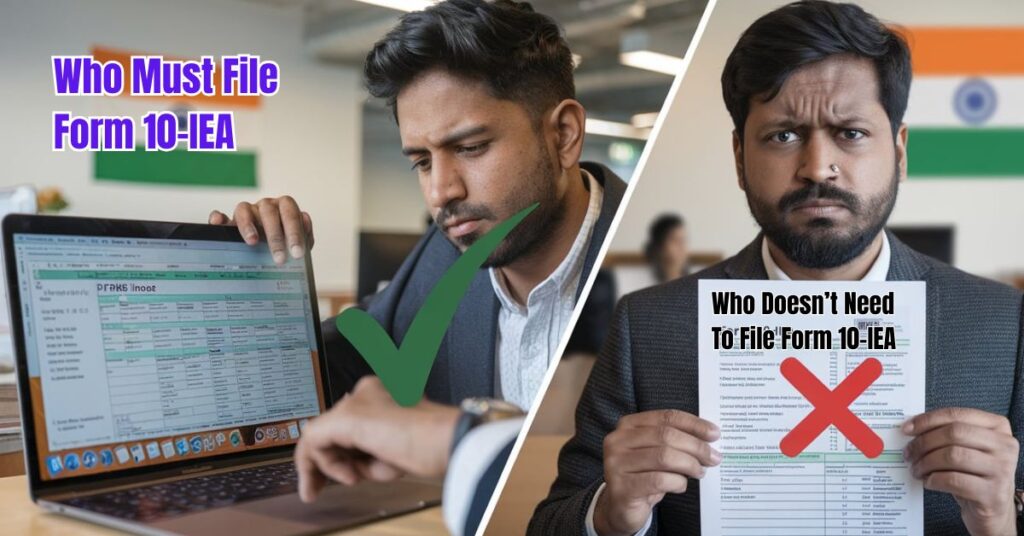
✔ You MUST File The Form If:
✅ You have business or professional income (PGPB – Profits & Gains from Profession/Business)
- This includes freelancers, consultants, sole proprietors, and partnership firms.
- Even if you’re a salaried individual with a side business, 10-IEA is mandatory to opt for the Old Regime.
✅ You want to claim tax-saving deductions like:
- HRA (House Rent Allowance)
- Home loan interest (Section 24)
- LIC, PPF, ELSS (Section 80C deductions)
- Medical insurance (Section 80D)
- Education loan interest (Section 80E)
✖ You Do NOT Need that Form If:
❌ You are a salaried individual with no business income → You can directly select the Old Tax Regime while filing ITR.
❌ You prefer the New Tax Regime (no deductions but lower tax rates for some).
🔴 Critical Note: If you have business income and skip Form 10-IEA, you cannot switch to the Old Regime later. You’ll be stuck with the New Regime for the entire year.
2. What Happens If You Don’t File Form 10-IEA?
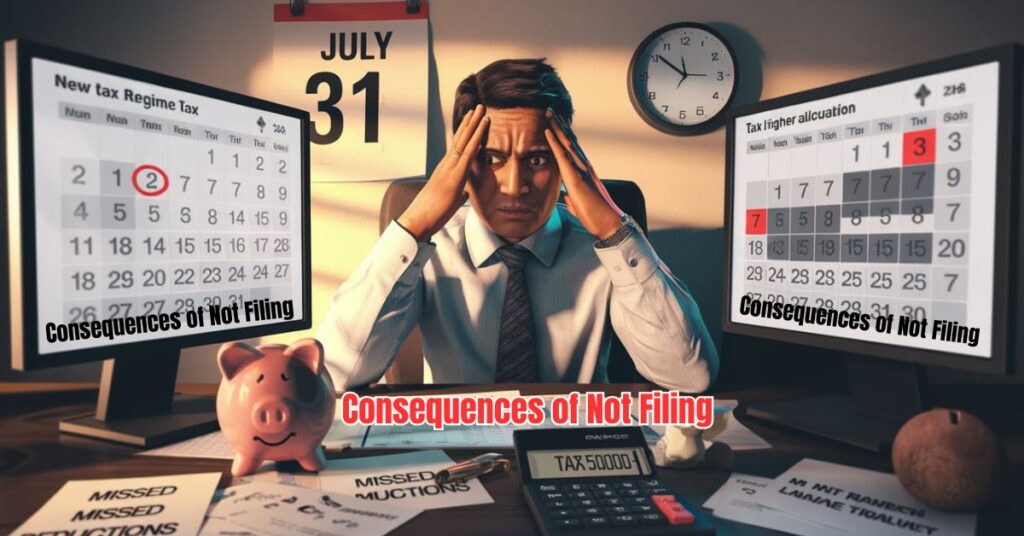
🚨 Major Consequences of Missing the Deadline
- You Lose All Deductions
- No HRA, no LIC benefits, no home loan tax savings.
- Example: If you pay ₹2 lakh in home loan interest, you lose ₹60,000 (30% tax benefit) under the New Regime.
- No Second Chance
- Unlike ITR revisions, 10-IEA cannot be filed late.
- Once the due date passes, your choice is locked for the year.
- Higher Tax Liability for Some
- The New Regime has lower tax slabs only if you don’t claim deductions.
- If you have major deductions (like HRA + home loan), the Old Regime could be cheaper.
⏰ Key Deadlines to Remember
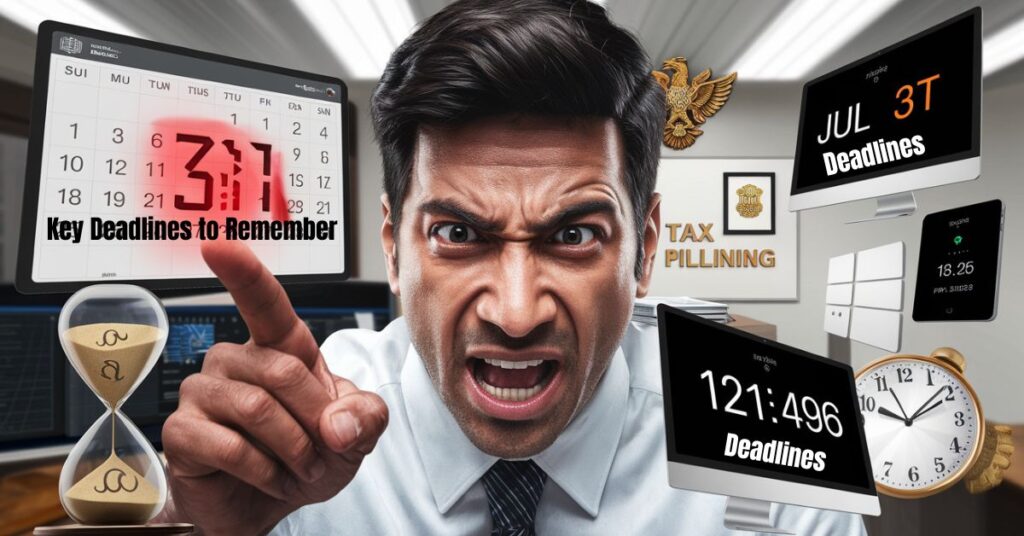
| Taxpayer Category | Due Date |
|---|---|
| Salaried / Non-Audit Cases | 31st July (or extended) |
| Tax Audit Required | 31st October (or extended) |
| Transfer Pricing Cases | 30th November (or extended) |
⚠️ File at least 2-3 days before the deadline to avoid last-minute tech glitches.
3. Step-by-Step Guide to Filing Form 10-IEA

📌 Step 1: Log in to the Income Tax Portal
🔗 https://www.incometax.gov.in
📌 Step 2: Go to e-File → Income Tax Forms → File Form 10-IEA
📌 Step 3: Fill the Form Correctly
- Page 1: Verify auto-filled details (PAN, name, address).
- Page 2: Answer two critical questions:
- Do you have business/professional income? → Select YES if applicable.
- Are you opting for the Old Tax Regime? → Select YES.
- Page 3: Choose the correct due date (July 31 / Oct 31 / Nov 30).
📌 Step 4: Submit & E-Verify (Aadhaar OTP or DSC)
- Once submitted, you CANNOT undo it. Double-check before finalizing.
4. Old vs. New Tax Regime: Which Saves You More Money?
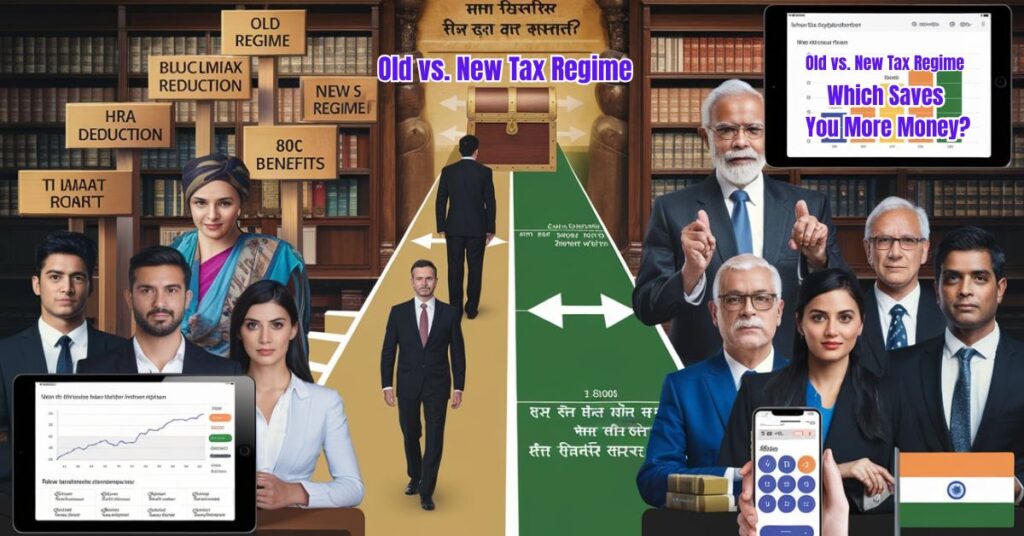
💰 Old Tax Regime (With Deductions)
✔ Best if you have:
- High HRA claims
- Home loan (Section 24 + 80C)
- Big investments (LIC, PPF, NPS, etc.)
💸 New Tax Regime (No Deductions, Lower Slabs)
✔ Best if you:
- Don’t have major deductions
- Fall in the ₹7.5L–₹15L bracket (5%–10% tax benefit)
🔹 Use the Tax Calculator on the IT Portal to compare both regimes before deciding.
5. FAQS – Clearing Common Doubts
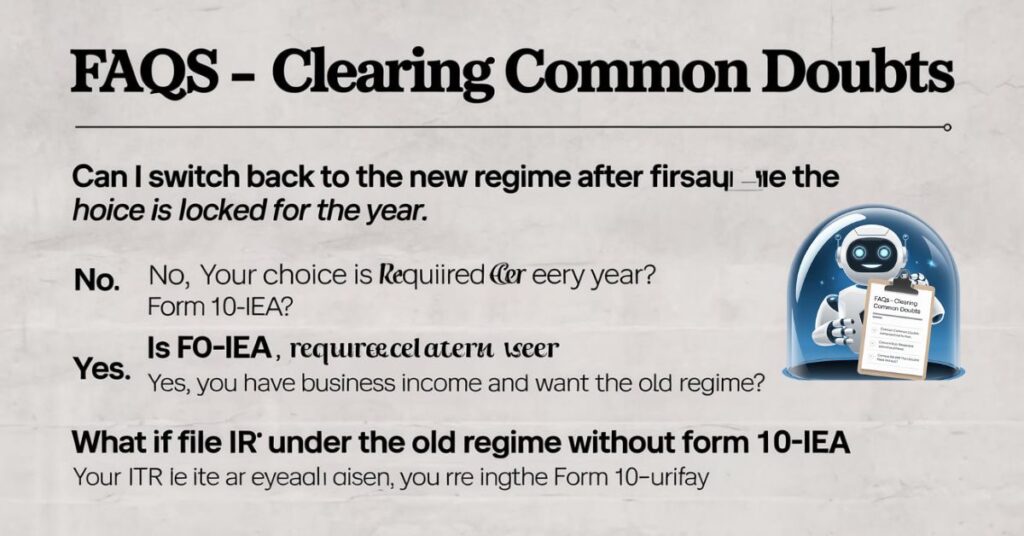
❓ Can I switch back to the New Regime after filing Form 10-IEA?
➡ No. Your choice is locked for the year.
❓ Is Form 10-IEA required every year?
➡ Yes, if you have business income and want the Old Regime.
❓ What if I file ITR under the Old Regime without 10-IEA?
➡ Your ITR will be invalid. You must file Form 10-IEA first.
❓ Can I file 10-IEA after submitting my ITR?
➡ No. Form 10-IEA must be filed before your ITR submission. If you’ve already filed your return under the New Regime, you cannot switch afterward. The tax department will process your ITR based on your last submitted preference.
❓ What if I file Form 10-IEA but later realize I qualify for the New Regime?
➡ Too late! Once Form 10-IEA is submitted, your choice for that financial year is irreversible. You’ll have to wait until the next FY to opt for the New Regime (if eligible). Always compare tax liabilities using the IT portal’s calculator before filing.
Final Verdict: Don’t Lose ₹50,000+ in Tax Savings!
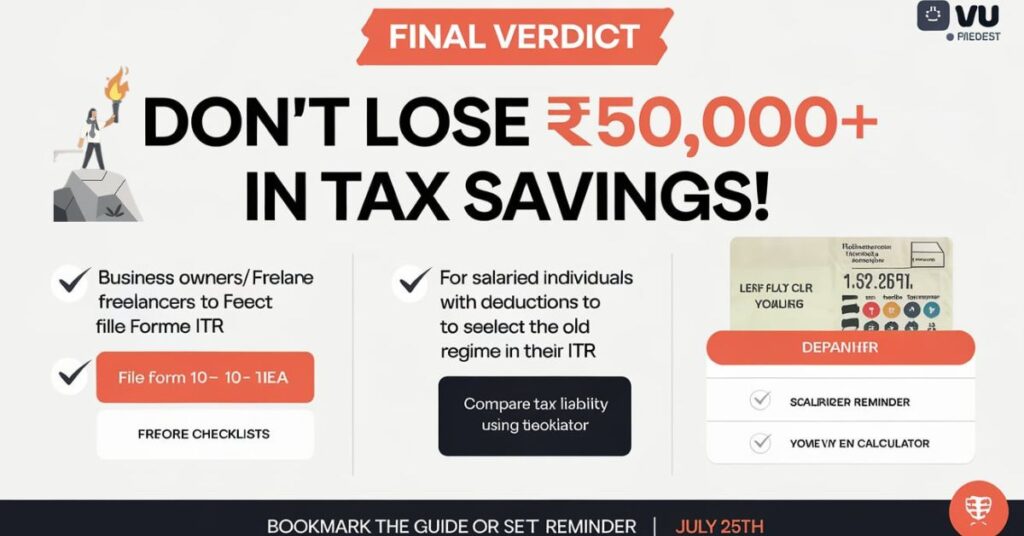
If you have deductions worth more than ₹1.5–2 lakh, the Old Regime is almost always better. But missing Form 10-IEA means losing those benefits.
🛑 Act Now:
✔ Business owners/freelancers → File Form 10-IEA before ITR.
✔ Salaried with deductions → Select Old Regime in ITR (no form needed).
✔ Compare tax liability using the IT Dept’s calculator.
📢 Pro Tip: Bookmark this guide or set a reminder for July 25 (before the deadline) to avoid last-minute rush!
🔗 Official Income Tax Portal for Form 10-IEA:
👉 https://www.incometax.gov.in/iec/foportal/help/statutory-forms/file-statutory-form/popular-form/form-10-IEA-um
📚 Read Next:
- [CBDT Releases ITR Forms 2024-25: Why the New Forms Are Better Than Before
- [New Tax Regime 2025: Revised Slabs, ₹75K Standard Deduction Explained]
Disclaimer: Tax laws change frequently. Verify with a CA or the IT Dept before filing. This guide is for educational purposes only. 🚀

